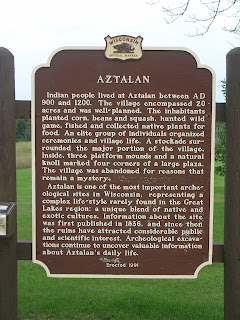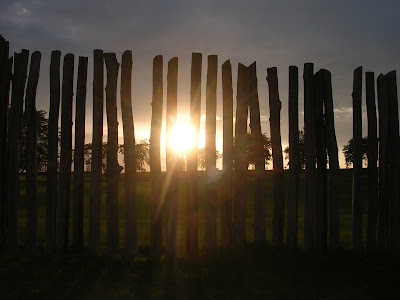The mystery of Aztalan dates back to the year 900. During this time, the land was inhabited by a group of people belonging to a culture that reigned North American from the Great Lakes all the way down to the Gulf of Mexico. This network of groups was referred to as the Mississippian Culture.

Tribes flourished and created advanced settlements. From 900 to 1300, these groups of people built complex settlements. They also shared an advanced trading system with nearby villages as well as those in the Gulf of Mexico. Three giant mounds remain on the Park grounds. There are many theories on the purpose of the mounds. Suggestions include ceremonial, defensive, storage and even include theories involving astrological study. Just as mysterious as the structural design of the mounds and the stockade fence, was the fate of the people who colonized this land.
The ruins of Aztalan were discovered in 1835. Upon discovery and subsequent research of the land, it was estimated that the people who once thrived here left the area between 1200 - 1300. However the reasons were unclear. One theory points to the famous Aztec tribes of Mexico. These tribes retell tales of their ancestors coming from the North. Based on similarities between the construction of the mounds between those found here and those in early Mexican Indian cultures, the land was named Aztalan. Based on artifacts found on Atzalan's grounds which show the items received in trade from the Gulf Of Mexico, a migration from the Great Lakes Area to Mexico is not out of the question. But the question of why still remains. Speculation centers around threats from other tribes or even a period of extreme cold that drove the people to warmer land.
The preservation of the area was not an easy task. In 1836 the land was surveyed and requests were made to preserve the land. However the government did not see the need for preservation and sold the land. Many mounds were destroyed. Artifacts found were recycled. Most of the land was turned into farmland. In 1850 the stockade still remained and again interest in preserving the land went ignored.
It was not until 1921 that preservation truly began. During this time, the Wisconsin Archaeological
Society acquired some of the land. In 1952 Aztalan became a State Park. Within the following decade it would be registered as a National Historic Landmark and added to the National Register Of Historic Places.
The park is well maintained. The stockade has been replicated in areas that were in disarray. The mounds are neatly trimmed and a staircase allows you to venture to the top. While this park does not allow camping, it provides wonderful trails the run along the river. If you get the chance to visit, sunsets at Aztalan State Park are stunning!
Aztalan State Park - DNR website







No comments:
Post a Comment